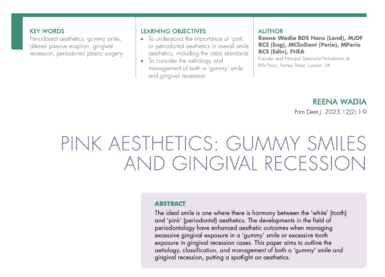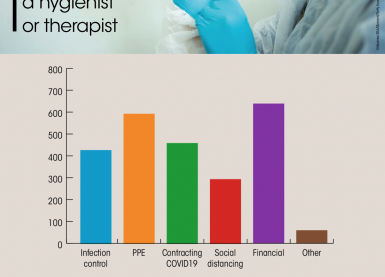Home/Articles
/ General Dental /
Reena’s Notes: TubulesLive with Dr Omar Ikram – Endodontic Calamities! How am I going to get myself out of this mess?
May 23, 2014

What is the most common cause of failure of root canal treatment?
- Intracanal microrganisms
- Missed canals
- Inaccessible canals due to perforations
- Ledges
- Fractured files/silver points
Management of fractured instruments
- Inform the patient
- Take radiographs to document situation
- If visible and in coronal canal it may be removable
- If in middle bypass using small files
- If at apex accept or bypass
- Prognosis depends on when file fractured
Causes of fractured instruments
- Cyclic fatigue is The file rotates freely but undergoes tension and compression until fatigue occurs
- Torsional failure is when the file becomes locked in the canal but continues to rotate
How to avoid fracturing files
- Always establish a good glide path-slide size 10
- Lubricate canal with irrigants
- Watch for loaded files
- Attend rotary courses to get used to systems
Symptoms of hypochlorite accident
- Pain whilst irrigating
- Burning pain
- Instantaneous swelling may spread
- Bleeding from the canal
- Patient may taste irrigant if in sinus
- Anaesthesia or paresthesia
Treatment of hypochlorite accident
- Irrigate with saline
- Pain control via local anaesthesia and analgesics (NSAIDs preferable 600mg ibuprofen 4 times a day 1-2 days)
- Cold compresses
- After one day irrigation with warm water to encourage blood supply to increase
- Recall 1 day, 3 days, 1 week (since incident)
Why are perforations a problem?
- Removes further hard tissue which means the fracture resistance of the tooth is decreased
- Creates a defect which bacteria in the gingival sulcus can colonise and cause periodontal disease
- Creates another portal of exit for bacterial products
- Creates a defect which allows the diffusion of fluid back into the canal to supply nutrients to bacteria
- Creates a defect that means sodium hypochlorite can enter the tissues and potentially cause a hypochlorite accident
How to avoid perforation
- Magnification 3X loupes minimum & light
- Preop assessment- using bur next to PA
- Use orifice openers with non cutting tips
- Microdebriders size 10 06 taper or 04 taper (file on a stick)
Treatment of pulpally involved cracked teeth
- Check for periodontal defects
- Access of canals
- Visualise fracture
- Visualise extent
- The crown margin must be able to be placed well below the fracture line
- The lower second molars are the most commonly cracked teeth as this tooth is closest to TMJ and W shaped fissure pattern
Prevention of cracked tooth syndrome
- Patients have teeth together for 10 mins a day in normal function!
- Those that have cracked tooth syndrome usually have a parafunctional habit
- Identify patients at risk
- Assess quality and number of previous restorations
- Provide education (stress and diet) cuspal coverage and or splint therapy



